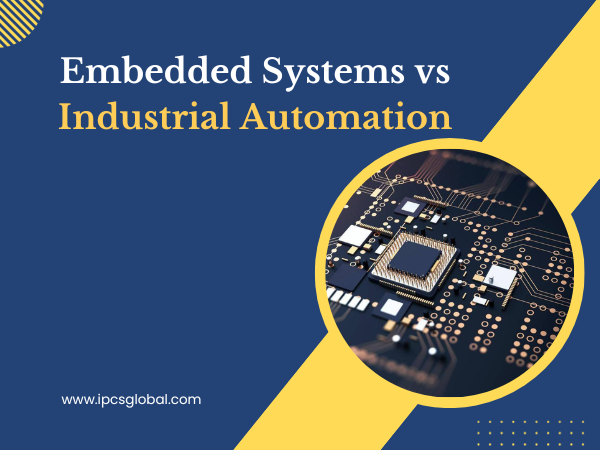Industrial automation and embedded systems represent two facets of technology that have significantly impacted various industries, enhancing efficiency, reducing human intervention, and improving productivity. Let’s explore the key differences and common elements between these two fields.
Industrial Automation: A Game Changer
Industrial automation is a transformative technological advancement that has revolutionized manufacturing and production processes across industries such as manufacturing, energy, agriculture, and healthcare. It integrates hardware and software to automate and control industrial tasks and processes. The goal is to optimize complex industrial operations.
In industrial automation, sensors and actuators gather data, while control systems and PLCs ensure efficient operations. Human-machine interfaces (HMIs) and SCADA systems enable real-time monitoring and control for smoother processes.
Embedded Systems: Precision in a Chip
Embedded systems, on the other hand, are dedicated computing devices designed to perform specific tasks seamlessly. These systems are incorporated into various electronic devices and equipment to control, monitor, and manage operations precisely. They range from household appliances to automotive control units and medical devices, all tailored to meet specific requirements.
Embedded systems consist of microcontrollers or microprocessors, memory and input/output interfaces. Software, known as firmware, is customized to match the exact needs of the device or application.
Distinguishing Between the Two:
1. Scope and Purpose:
– Embedded Systems is a dedicated functionality within a single device.
– Industrial Automation is the application of technology, focusing on complex industrial processes.
2. Hardware and Software:
-Embedded Systems: Hardware and software tightly integrated for specific applications.
-Industrial Automation: Variety of hardware and software for diverse tasks.
3. Integration:
-Embedded Systems: Integration into consumer electronics and devices.
-Industrial Automation: Integration of various components and technologies for complex processes.
4. Real time Operation:
-Embedded Systems: Often require real-time operation for precision.
-Industrial Automation: Real-time operation varies by application.
5. Flexibility and customization:
-Embedded Systems: Less flexible and challenging to modify post-deployment.
-Industrial Automation: Customizable and reconfigurable for evolving processes.
Common Elements in Both Fields:
- Hardware Components: Microcontrollers, sensors, and actuators are essential in both domains for data gathering, decision-making, and action execution.
- Real-time Operation: Both rely on real-time or near-real-time operation for prompt and accurate responses.
- Software Integration: Software controls and manages hardware components, whether firmware in embedded systems or specialized software in industrial automation.
- Interfacing and Communication: Interfacing with external devices or networks through various communication protocols is a shared aspect.
- Sensors and Actuators: Sensors collect data, and actuators perform actions based on this information, serving critical roles in both fields.
- Control Logic: Control logic, implemented through microcontrollers, PLCs, or algorithms, is integral to managing system behaviour in both cases.
- Efficiency and Optimization:
Increasing efficiency and process optimization is a common goal, whether for specific devices in embedded systems or entire production processes in industrial automation. - Safety and Reliability: Ensuring safety and reliability is paramount, whether for safety-critical embedded systems or machinery in industrial automation.
- Monitoring and Control: Both fields offer mechanisms for monitoring and control, ranging from SCADA systems in industrial automation to built-in diagnostics in embedded systems.
- Customization: Both embedded systems and industrial automation allow for tailoring to specific requirements or adapting to changing processes.
In conclusion, while embedded systems and industrial automation serve different purposes, they share numerous common elements, reflecting their interconnectedness in the technology landscape. Understanding these distinctions and commonalities is crucial for tech professionals, as both fields contribute significantly to efficiency and innovation in their respective domains. Whether automating daily home appliances or optimizing complex industrial processes, these technologies are indispensable in our rapidly evolving world.



0 Comments